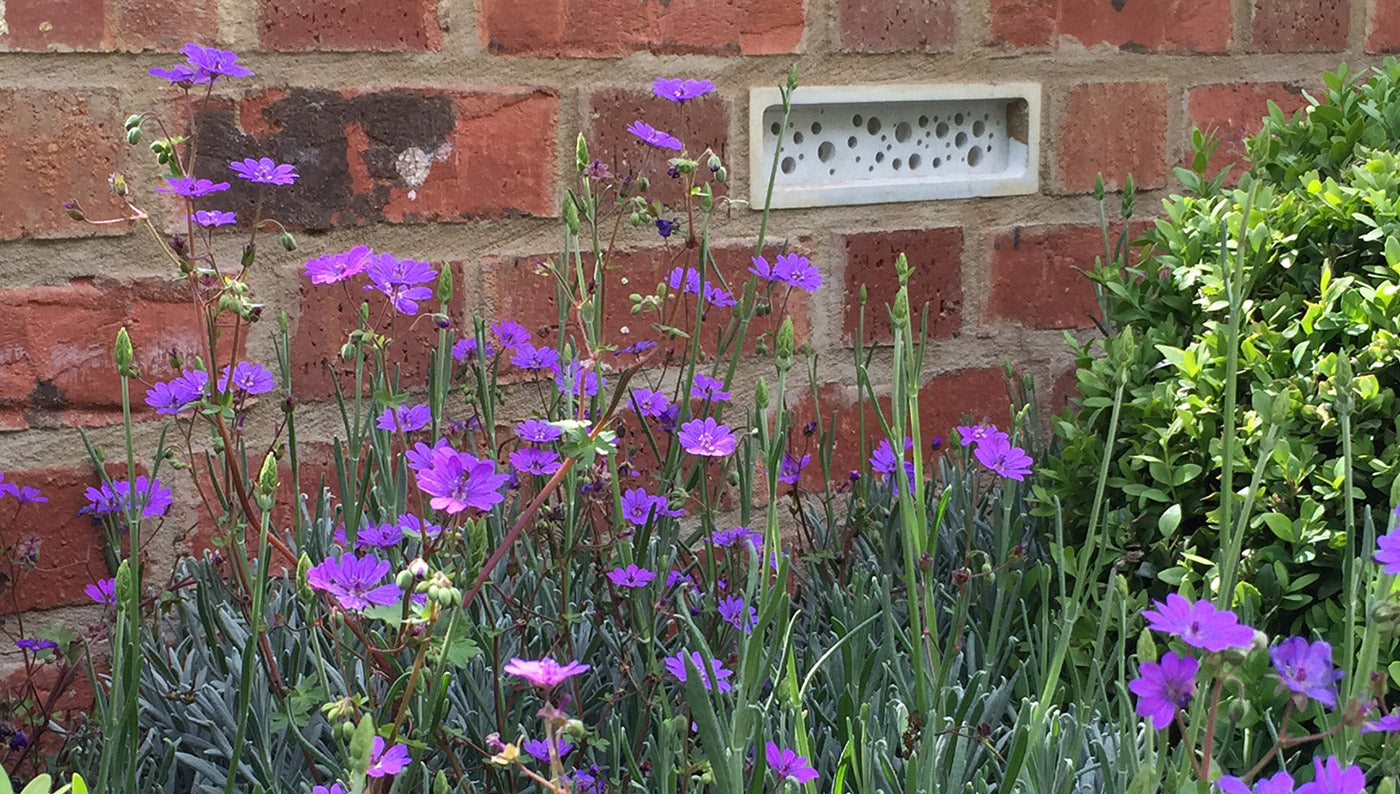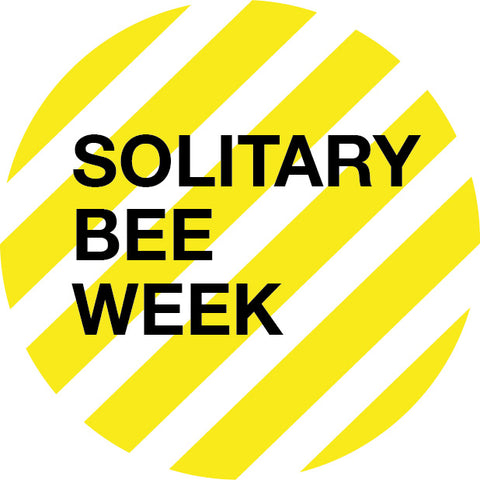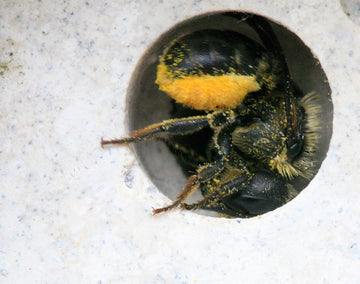5 things you need to know about solitary bees.
1. Solitary bees are different from honey bees and bumble bees.
Solitary bees are not simply bees who have left the hive and are now alone. There are over 200 species of solitary bee and, as the name suggests, they live alone, although in truth they often nest close to one another. They do not produce honey, do not have a queen and do not live in hives.
 2. Pollinators are responsible for around a third of all food we eat.
2. Pollinators are responsible for around a third of all food we eat.
Pollinators, including solitary bees, carry out a vital role in pollinating our crops, and also flowers and trees. In some parts of China pollination is already being undertaken by hand using paintbrushes because there are no bees left to do it naturally. We used to think that honey bees were the biggest contributors to crop pollination but that simply isn't the case today, all types of bees are important. 
3. Solitary bees are non-aggressive.
Because solitary bees do not have a store of honey to protect they are non-aggressive, meaning they are safe around pets and children. The males generally have no sting and the females will only sting if handled roughly or trod on. Perfect therefore to encourage into your garden or allotment or new build development.

4. They have a short, but busy, life cycle.
Generally (across the species) solitary bees emerge from their nests in the spring. Males emerge first and, after feeding, they hang around the nest waiting for the females. Once mating is complete the males die fairly quickly, what a life! After mating the females will begin the process of nesting, selecting a suitable site, constructing the nest and laying anything between 1 and 20 eggs. The eggs will hatch into larvae, which feed on pollen and nectar that the female has stored within each nest. The larvae develop and pupate, emerging the following spring (or later in the year depending on species) and repeating the cycle.
5. Their habitat is under increasing threat.
There are many factors in declining solitary bee numbers, including increased use of chemicals in farming, fewer wildflower meadows, and less suitable habitat. As fields become bigger we lose more hedgerows, which used to provide ample homes to a wide range of wildlife. Also as we build more and more properties and landscape our gardens we unwittingly destroy habitat and nests as we do so. We developed the bee brick as a means of increasing consideration for the habitat of cavity-nesting solitary bees, by creating a possible nesting site for them in each new development, garden or wall.

Solitary Bee Week
If you'd like to know more about Solitary Bees or fancy helping us spread the word about these brilliant pollinators then check out Solitary Bee Week, a week of action and awareness we organised to raise awareness of these 'other' bees.



41 comments
We have several large holes appeared in our lawn about the size of a 50p we have seen a bee in one of them-do they make holes to live in?
Hi Chris,
Thanks for your feedback. I’m afraid there are a number of reasons for the pricing of our range, not least the fact that each and every piece is made by hand by our team within the UK, earning the Living wage and working in a way that took several years to develop.
Do sign up to our mailing list though and look out for our perfectly imperfect sale which happens in August normally, and where you can grab something from the range at over 50% off just for a slight air bubble or chip!
Hello there. Why are your products sooo expensive? Doesn’t make things easier.
Chris x
Hi, I was just wondering, over the past couple of years I have introduced new houses to our back garden, and in total we have 11 bee houses attached to a south facing fence. Last year we had quite a few bees but over the last couple of weeks we are having probably about 200 solitary bees at the same time. They look to be chasing each other, fall to the floor in groups of two then get and fly off! Would you consider that amount of bees a healthy number as it sounds like someone if flying a drone in the garden.
In Anticipation
Hi
I have a bee box which is slowly being filled. My problem is a black bee constantly fights with the other bees actually knocking then to the ground, I would be grateful for any information on this and possibly a solution to it.
Many thanks.
Many thanks